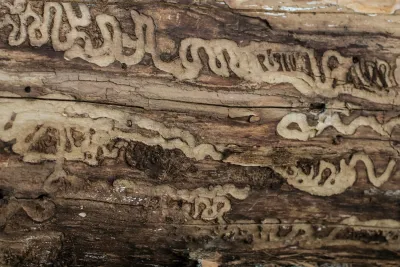The Emerald Ash Borer is a rapidly spreading invasive pest threatening Minnesota’s ash trees, and homeowners are encouraged to plant diverse replacement species, avoid moving ash firewood, and monitor for signs of infestation.

The Emerald Ash Borer (EAB), an invasive insect native to Asia, has spread to 36 U.S. states and parts of Canada since its arrival in Minnesota around 1990. It now threatens forests as far north as Cass County and is expected to reach Beltrami County soon. With an estimated 1 billion ash trees in Minnesota — many vital to wetland ecosystems — the death of these trees from EAB could significantly alter forest habitats and harm native plant and animal species. The spread has been aided by mild winters, which are no longer killing off EAB larvae as harsher cold once did.
Ash trees have long been planted in cities to replace elms lost to Dutch Elm disease and birches lost to bronze birch borer, but the rise of EAB has pushed cities to rethink this strategy. Municipalities are now diversifying tree plantings to reduce the risk of future widespread loss. Homeowners with healthy ash trees are advised to start planting replacement trees such as maple, birch, or basswood this spring to ensure continued canopy coverage. Additionally, residents should avoid moving ash firewood from infested areas, as it can spread the pest to new locations.
Early signs of EAB infestation include thinning tree canopies, bark splitting, D-shaped exit holes, and increased woodpecker activity. Once detected, management options like insecticide treatments can slow the damage. Resources from the University of Minnesota Extension provide guidance on identification and treatment. While managing EAB across large landscapes requires coordination among agencies and landowners, individuals can still make a meaningful impact by taking preventive steps and planting a variety of tree species to support long-term forest health.
FULL STORY: Master Gardener: How to prevent and identify Emerald Ash Borer

Maui's Vacation Rental Debate Turns Ugly
Verbal attacks, misinformation campaigns and fistfights plague a high-stakes debate to convert thousands of vacation rentals into long-term housing.

Planetizen Federal Action Tracker
A weekly monitor of how Trump’s orders and actions are impacting planners and planning in America.

San Francisco Suspends Traffic Calming Amidst Record Deaths
Citing “a challenging fiscal landscape,” the city will cease the program on the heels of 42 traffic deaths, including 24 pedestrians.

Defunct Pittsburgh Power Plant to Become Residential Tower
A decommissioned steam heat plant will be redeveloped into almost 100 affordable housing units.

Trump Prompts Restructuring of Transportation Research Board in “Unprecedented Overreach”
The TRB has eliminated more than half of its committees including those focused on climate, equity, and cities.

Amtrak Rolls Out New Orleans to Alabama “Mardi Gras” Train
The new service will operate morning and evening departures between Mobile and New Orleans.
Urban Design for Planners 1: Software Tools
This six-course series explores essential urban design concepts using open source software and equips planners with the tools they need to participate fully in the urban design process.
Planning for Universal Design
Learn the tools for implementing Universal Design in planning regulations.
Heyer Gruel & Associates PA
JM Goldson LLC
Custer County Colorado
City of Camden Redevelopment Agency
City of Astoria
Transportation Research & Education Center (TREC) at Portland State University
Jefferson Parish Government
Camden Redevelopment Agency
City of Claremont


























